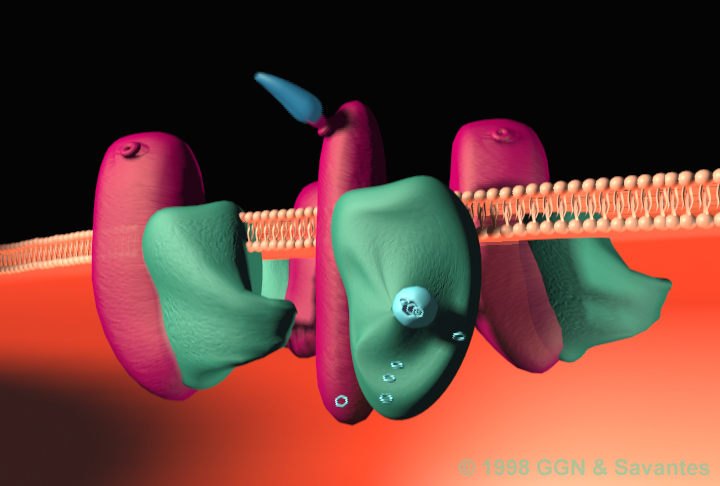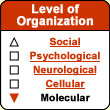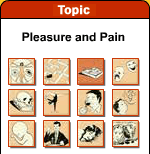|
|


There are five types of receptors
for dopamine in the human brain, identified as
D1 to D5. They are not all equally involved in pleasure-seeking
behaviour. For instances, some studies have shown that
D3 receptors appear to be more involved in the phenomenon
of dependency.
More recently, other studies have associated the activation
of D1 receptors with the euphoriant effects of cocaine and
the desire to obtain them.
|
|
|
Many hypotheses have been offered to
try to identify the relationship between dopamine and pleasure.
The first and simplest posited a direct causal connection between
dopamine and the sensation of pleasure. In other words, it was
thought that the increased dopamine level that accompanied a gratifying
behaviour was the direct cause of its hedonic impact.

Model of a dopaminergic receptor
with the associated G-protein
|
But doubts were cast on this theory
by other experiments, in particular those showing that the increase
in dopaminergic activity preceded the gratifying behaviour itself.
A new hypothesis then arose, that dopamine acted as a facilitating
factor in learning.
According to this hypothesis, the amount of dopamine released
by the brain prior to a behaviour is proportional to its potential
for providing pleasure. Depending on whether the behaviour proves
to be pleasant or unpleasant, the anticipatory dopamine level
would be higher or lower the next time.
According to this same hypothesis, learning would enable this dopaminergic
response to be transferred from an unconditioned stimulus (such
as an open can of tuna, for your cat) to a conditioned one (the
noise of the can opener). This hypothesis accords dopamine a central
role in the way we learn to remember sources of gratification.
Still other studies, however, have raised
questions about this role of dopamine as a modulator of learning.
In particular, certain rat experiments showed that even if the
animals kept pressing the lever by which they stimulated their
own brains, the actual level of dopamine in their brains kept decreasing.
From these studies, a new hypothesis emerged that associated dopamine
more with novelty and its ability to increase the animals’ motivation
to approach the gratifying object. This
“incentive value” would be a distinct component of
what we commonly call “pleasure seeking.” In other
words, the dopaminergic system would be necessary for wanting the
gratifying object, but not for liking it or for learning
to remember new sources of pleasure.
|
|





